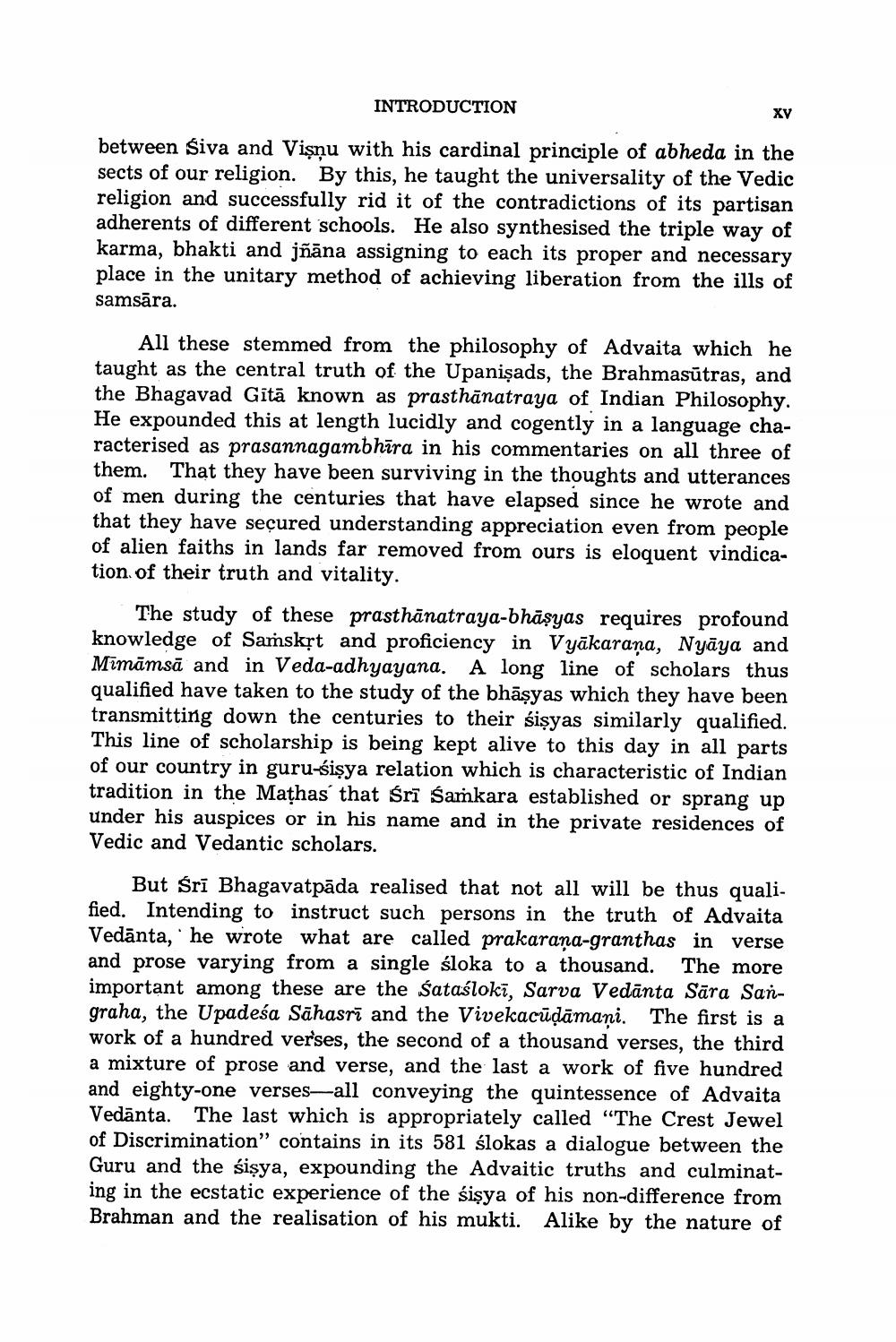________________
INTRODUCTION
XY
between Siva and Visnu with his cardinal principle of abheda in the sects of our religion. By this, he taught the universality of the Vedic religion and successfully rid it of the contradictions of its partisan adherents of different schools. He also synthesised the triple way of karma, bhakti and jñāna assigning to each its proper and necessary place in the unitary method of achieving liberation from the ills of samsāra.
All these stemmed from the philosophy of Advaita which he taught as the central truth of the Upanişads, the Brahmasūtras, and the Bhagavad Gitā known as prasthānatraya of Indian Philosophy. He expounded this at length lucidly and cogently in a language characterised as prasannagambhira in his commentaries on all three of them. That they have been surviving in the thoughts and utterances of men during the centuries that have elapsed since he wrote and that they have secured understanding appreciation even from people of alien faiths in lands far removed from ours is eloquent vindication of their truth and vitality.
The study of these prasthānatraya-bhāşyas requires profound knowledge of Samskrt and proficiency in Vyākaraṇa, Nyāya and Mimāmsā and in Veda-adhyayana. A long line of scholars thus qualified have taken to the study of the bhāşyas which they have been transmitting down the centuries to their śişyas similarly qualified. This line of scholarship is being kept alive to this day in all parts of our country in guru-sisya relation which is characteristic of Indian tradition in the Mathas that Śrī Samkara established or sprang up under his auspices or in his name and in the private residences of Vedic and Vedantic scholars.
But Śrī Bhagavatpāda realised that not all will be thus qualified. Intending to instruct such persons in the truth of Advaita Vedānta, he wrote what are called prakaraņa-granthas in verse and prose varying from a single sloka to a thousand. The more important among these are the sataśloki, Sarva Vedānta Sāra Sangraha, the Upadeśa Sahasrī and the Vivekacūdāmaņi. The first is a work of a hundred verses, the second of a thousand verses, the third a mixture of prose and verse, and the last a work of five hundred and eighty-one verses—all conveying the quintessence of Advaita Vedānta. The last which is appropriately called “The Crest Jewel of Discrimination" contains in its 581 ślokas a dialogue between the Guru and the sisya, expounding the Advaitic truths and culminating in the ecstatic experience of the sişya of his non-difference from Brahman and the realisation of his mukti. Alike by the nature of




